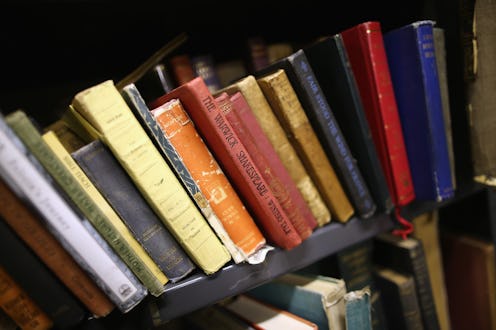Books
How is 2014's "Year of Reading Women" Going?
Think back to January 2014 — long ago as it may be. You might remember a great deal of discussion in the literary world surrounding some pretty shocking statistics. An organization for women in the literary arts, VIDA, reported that in major literary publications, women were getting the short end of the stick. Publications weren't hiring women to review books — for example, at the New York Review of Books, only 19 percent of reviewers were women; at the London Review of Books, 18 percent. They weren't reviewing books by women, either; again at the NYRB and LRB, the percentages of female-authored books reviewed were 21 and 23, respectively.
Additionally, according to Pew research, women were reading more than men, both in quantity and frequency. 82 percent of women had read a least single book in 2013, compared to 69 percent of men; both the mean (14) and median (6) numbers of books read by women in 2013 were higher than numbers of books read by men (10 and 4, respectively).
Taken together, these two sets of statistics were especially shocking: If women are more likely to than men to read a book, and tend to read more books than men, why were so few book reviews about or by female writers?
In response to these statistics, many reviewers, bloggers, and critics declared 2014 “the year of reading women” and vowed to only read (and in some cases, review) books written by female authors for all of 2014. Flash forward 11 months, and 2014 is coming rapidly to a close. So has the “year of reading women” changed men's and women’s reading habits at all? We won’t know for sure until the year is out, but Goodreads has a jump on some early numbers. On Wednesday, they released an infographic called “Sex and Reading: A Look at Who’s Reading Whom” with numbers drawn from the habits of their 20,000 most active female and 20,000 most active male members.
If you pop over to the infographic and take a look, Goodreads' numbers show that in 2014, women read twice as many books published in 2014 as men did. This suggests that women are more likely to stay current with new book releases, which Goodreads refers to as being "on-trend."
The numbers from Goodreads also suggest that, by and large, both men and women are sticking to authors of their own gender this year. Of the 50 books published in 2014 that were most-read by men, 45 were written by men; of the 50 books published in 2014 that were most-read by women, 45 were written by women (46, really; Goodreads cheekily counts Robert Galbraith as a male author, but I think by now we all know that’s not the case).
So this means men are technically slightly “better” at reading books written by authors of the opposite sex, right? Well, yes and no. The most intriguing statistic Goodreads offers is that in the first year of a book's publication, women make up 80 percent of a female author’s audience and 50 percent of a male author’s audience. This challenges Goodreads’ own “everyone sticks to their own sex” claim somewhat and it bolsters the concept of women as “on-trend” and the first readers of newly published books.
But most importantly, this statistic suggests that, if the numbers for the wider population are even remotely close to the numbers represented by Goodreads here, most new books — by male or female authors — will live and die by how well they appeal to the female reader. Think of it another way: according to these numbers, if every female reader decided to make 2015 their personal “year of reading women,” male authors would see their readerships — and revenues halved.That’s a lot of clout we have. So let’s use it.
Let’s not let “the year of reading women” stop on December 31. Let’s focus on female writers, especially women of color, and queer and trans women. If you don’t want to read exclusively female authors, at least refuse to read male authors who do not create rich, complex, interesting female characters on the same scale and with the same frequency as their male characters. If you’re going to give male writers your eyes and your precious dollars, you should damn well make them work for 'em.
And the same goes for reviews. This, after all, is what sparked the whole “year of reading women” movement: a report criticizing the lack of female critics and reviews of books written by women. And if women are the market for new books, it stands to reason we are also the market for reviews of those new books. So let’s only read the publications that want us. Don’t read book reviews from publications that don’t hire an equal number of male and female critics and feature an equal number of books written by male and female authors. The Internet is vast and glorious and (if you know where to look) filled with well-read critics and writers who actually value female authors and readers; give them your eyes and tweets and attention instead.Although Goodreads readers' statistics might not tell us exactly who and how everyone is reading — they're not entirely representative of the general public, and they are just a sliver of a social media community — they do remind us that women have more power when it comes to books than we might have thought. Let’s put it to good use.
